Yesterday I posted a short piece titled “When Horse Cruelty Was Common.” It was sparked by an interest in Alan K. Rode‘s just published “Michael Curtiz: A Life In Film,” a reputedly excellent biography. Yesterday I focused on allegations about the tripping of horses during a military attack sequence in Curtiz’s The Charge of the Light Brigade (Warner Bros., 10.20.36). A Wikipedia account contends that “125 horses were tripped with wires; of those, 25 were killed or had to be put down afterward.”
Unable to reach Rode yesterday afternoon, I repeated the Wiki account along with a comment about Curtiz from a critic friend.
This morning, however, I learned that the Wikipedia report, which partly stems from a tale about the Light Brigade shoot by David Niven in his book “Bring On The Empty Horses,” is exaggerated and erroneous. Rode, who got in touch this morning, calls it “a myth.” Only four horses were killed during the shoot, Rode contends, and the real bad guy in the Light Brigade horse tragedy was second-unit director “Breezy” Eason.
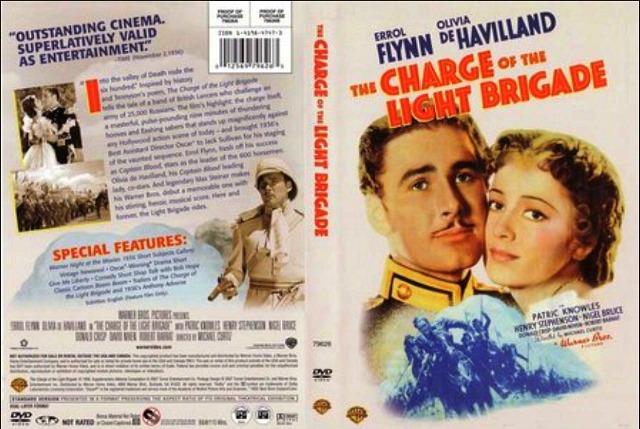
To explain his case Rode sent along a couple of pages from his book. He also gave permission to reprint them.
“Several horses did die during the filming of The Charge of the Light Brigade,” Rode wrote in an email, “but the stories of the mass killing of horses propagated by David Niven and other sources including Wikipedia appears to be yet another anecdote that has fossilized into the bedrock of Hollywood folklore.
“Curtiz could be quite merciless when it came to putting ‘realism’ on screen, but, as you indicated, this was in keeping with the times. The more notorious story is his alleged drowning of three extras during the filming of Noah’s Ark (’28).
“I’ve attached an extract from my unedited manuscript that discusses the Light Brigade horse situation in some detail. My research on this matter was quite thorough. All of my writing about Curtiz is traceable to a verifiable source.”
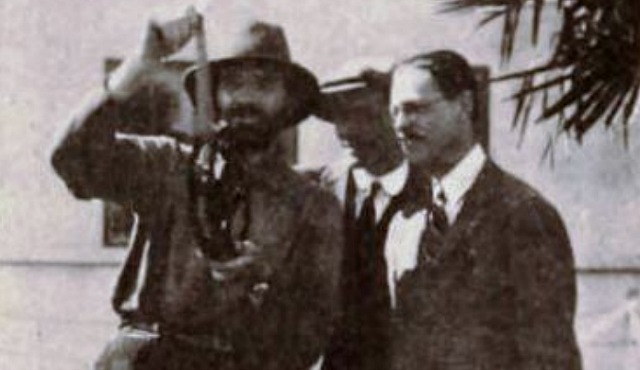
2nd unit director “Breezy” Eason (hat, beard), sometime in the 1930s.
Here are the pertinent portions from Rode’s book:
“In his memoir Niven also wrote about Curtiz’s personal involvement in a cruel practice that allegedly resulted in the mass crippling and destruction of horses: ‘Curtiz ordered the use of the ‘Running W,’ a tripping wire attached to a foreleg. This the stunt riders would pull when they arrived at
full gallop at the spot he had indicated, and a ghastly fall would ensue.
“‘[Errol] Flynn led a campaign to have this cruelty stopped, but the studio circumvented his efforts and completed the carnage by sending a second unit down to Mexico, where the laws against mistreating animals were minimal, to say the least.’
“Niven’s account was partially accurate. Flynn apparently did report the maltreatment of horses to the Humane Society at some point. He despised any type of cruelty toward animals and blamed Curtiz for the abuse. Flynn’s widow, Patrice Wymore, told me, ‘I know Errol was terribly incensed at [Curtiz’s] treatment of animals.’
“But contrary to Niven’s assertion and other published reports, no portion of The Charge of the Light Brigade was filmed in Mexico. [And] his claim concerning Curtiz’s responsibility regarding the mass inhumane treatment of horses appears to have been grossly exaggerated.
“Nearly every man in Hollywood who could skillfully ride a horse — including the author’s great uncle — appeared in the film. Curtiz himself did not necessarily order the Running W to be used. Use of a trip wire held by the rider and attached to a foreleg was standard practice in the industry at that time.
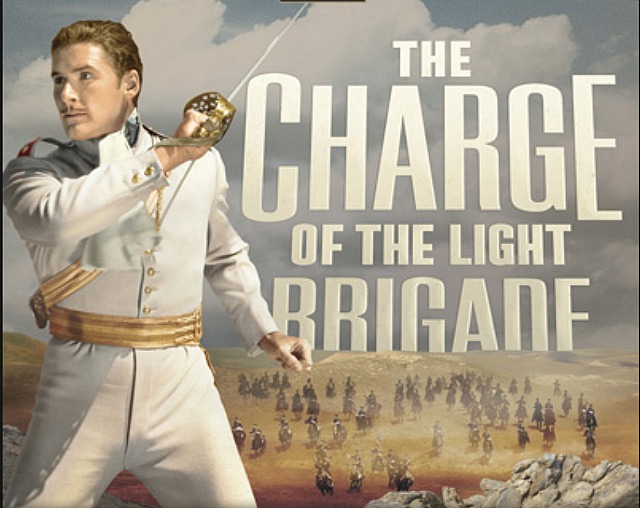
“Yakima Canutt, the legendary second-unit director and godfather of movie stuntmen, lost just two animals to freak accidents in more than half a century of continually handling horses in action movies. In his memoir Canutt provided clarity concerning the use of the Running W: ‘It was something that caused a lot of controversy for stuntmen and Western producers. I remember reading an article written by an officer of the Humane Society that stated we were tying wires on the horses’ legs and crippling them so badly that they had to be killed after the stunt.
“[But] the Running W, used right, will not cripple a horse. I have done some three hundred Running Ws and never crippled a horse.’
“After Canutt demonstrated the proper use of the Running W for a group of Los Angeles Humane Society officials at Vasquez Rocks, they approved the practice for use in Virginia City, a 1940 Curtiz film starring Errol Flynn. Canutt remembered: ‘It was generally understood in Hollywood that Flynn had reported to the Humane Society about horses being mistreated, but it wasn’t on Virginia City. I did a couple of Running W’s for him in that picture, and he always watched me doing it and all he ever said was, ‘Now why don’t all the fellows do them that way?’”
“Unfortunately, Canutt wasn’t assigned to Light Brigade. The second-unit director hired to direct most of the key action sequences was B. Reeves’Breezy’ Eason. According to the director Andrew Marton, Eason was “a crazy, drunk Irish-American, happy-go-lucky, who had the uneducated man’s flair for doing the right thing at the right time.” He was generally regarded as the best second-unit action director in Hollywood. Eason earned his nickname by reportedly always printing the initial take of an action shot, but the moniker could also be ascribed to his attitude toward safety.
“Eason took extreme risks in directing action sequences and was indifferent about the treatment of animals so long as he captured the necessary footage. Although his work was usually confined to Westerns, Eason made his reputation by directing the chariot race in the 1925 version of Ben-Hur, a production marred by perhaps the worst episode of prolonged animal abuse in motion picture history. Canutt diplomatically remarked about Eason, ‘I sincerely admired [Eason] for his ability as an action director, but I always felt that he took too many risks.’
“The bulk of the action sequences were filmed at Lasky Mesa during the first week of June; Curtiz and Eason directed the charge scenes using separate units. The scenes required 280 extras and 340 horses and were filmed with multiple cameras along a thousand-foot bulldozed road that paralleled the horse riders. The scenes included explosions from rigged detonations on an open plain, as men on horseback at full gallop took falls. At least two stuntmen were hospitalized with severe leg injuries.
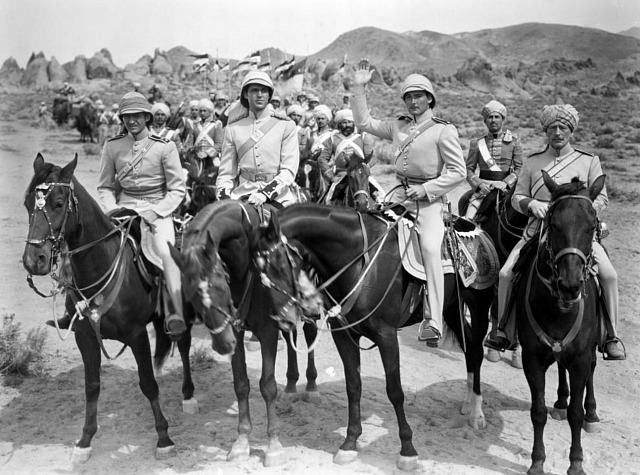
“The final stunt and action sequences were filmed in Sonora, California, near the foot of the Sierra Nevada Mountains. The company had already been lucky after a spooked elephant ran amok during an earlier leopard hunt action sequence in the film that Eason had shot at Lake Sherwood. The agitated pachyderm was caught before any injuries occurred. Warner Bros. would experience nothing but misfortune during the week of June 14 in Sonora.
“The Sonora location was logistically favorable — a wide plain in a valley surrounded by mountains on three sides — but the ground was a thin layer of soil over solid rock. Eason approved the site and had a six-hundred-foot-long trench excavated along one edge of the plain to install a car with multiple cameras that could film the riders at a low angle, along with other trenches for camera placement. The use of dynamite created dagger-like protrusions in ditches that resembled craters.
“After a day for setups, Eason began filming stunts and horse falls with more than sixty riders, upward of eighty-one horses (approximately thirty of these were locally purchased), sixteen cameramen, numerous assistants, a fire engine, and an ambulance. By the last day of filming, two ambulances were needed.
“Powder technicians rigged dozens of explosives that were triggered as the riders galloped through the mayhem toward the end of the valley. One technician was treated for sunstroke and a stuntman reportedly broke his neck. Other riders were injured when they were thrown or fell on the rocky terrain. The horses fared worse. After Eason concluded filming the stunts, including six Running Ws and six pitfalls, two injured horses had to be put down and another subsequently collapsed and died. The local chapter of the ASPCA discovered what was going on and dispatched a representative to investigate before the company could leave or cover up what had happened.
“On June 29, 1936, three Warner employees, including Eason’s first assistant, Jack Sullivan, pled guilty in court to animal cruelty and were sentenced to pay a fine of fifteen dollars and received a suspended ten-day jail sentence for using the trip wires that caused the death of the horses. Frank Mattison, who fretted about the second unit expending overhead funds by sitting around in Sonora, viewed the situation as a nuisance. Mattison facilitated the court pleas without first conferring with the Warner legal department. The guilty pleas to animal cruelty by Warner Bros. employees were reported in San Francisco newspapers and picked up by the Associated Press. More than one thousand letters of protest poured into the studio. Animal welfare organizations in America and England began to line up against the film.
“Jack Warner wasn’t about to let his expensive epic suffer from bad publicity that he considered manifestly unjust. He immediately orchestrated a legal counterattack. The studio’s attorney Roy Obringer accused the ASPCA investigator of exaggerating the events, which opened the floodgates for Humane Society articles relating the deaths of ‘three or four hundred horses.’ The studio maintained that none of the destroyed horses had been injured because of the use of the Running W or trip wires. Obringer and A. J. Guthrie traveled to San Francisco and showed the local head of the Humane Society photos of the dead horses, which had no trip wires attached to their forelegs. The ASPCA was unconvinced and stood behind its investigator.
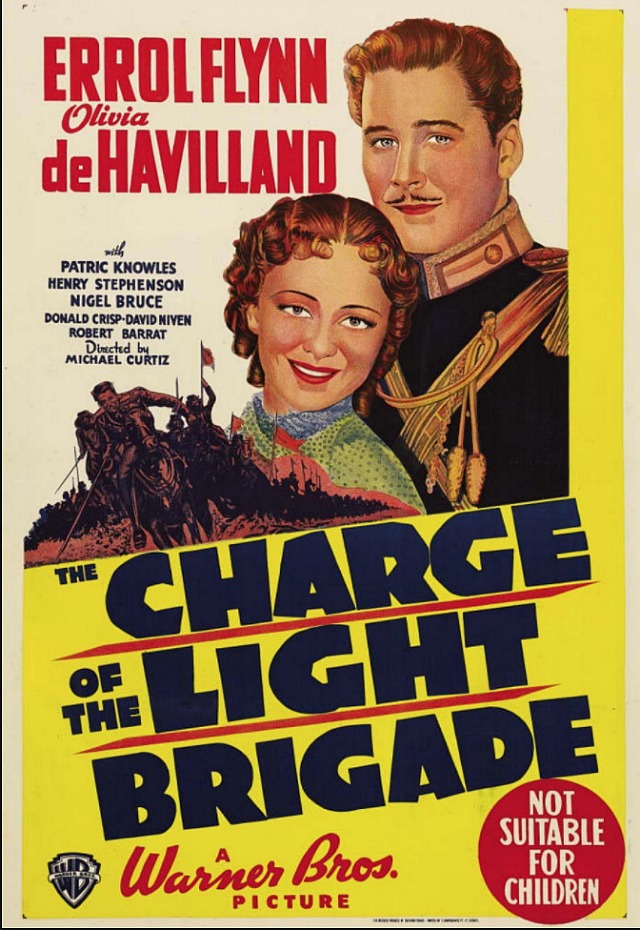
“Archival Warner legal files revealed that the ASPCA investigator who originally showed up in Sonora, a man named Girolo, hit up Frank Mattison for a hundred-dollar ‘loan’ and later tried to extort additional money from Warner Bros. personnel. The studio theorized that Girolo notified the San Francisco newspapers about the guilty pleas when his second shakedown attempt was rebuffed.
“The attending veterinarian, Warner Bros. employees, and other principals on the scene provided signed statements and sworn affidavits that attested to the nature of the injuries of the two horses that were put down, along with the third horse that subsequently died of heart failure. There was a fourth horse that was killed as a result of falling and striking a sharp rock during a scene filmed in Chatsworth. Unable to reverse the guilty pleas of its employees, Warner Bros. concentrated on correcting reports about the deaths of numerous horses. The studio successfully sued the Women’s Guild of Empire in Great Britain for libelous statements about the film, as well as a recommended boycott.
“As a result of the legal and publicity ramifications caused by their alleged mistreatment of horses, Warner Bros. instituted an internal policy requiring a Humane Society representative to be present at every film production involving horse stunts. Running W and pit falls were permanently banned in December 1940.
“Although it is possible that more horses could have been killed, there is not a scintilla of evidence that other animals died or that Warner Bros. orchestrated a cover-up. The mythical mass murder of horses during the production of Light Brigade ended up historically tarring a single individual: Michael Curtiz was identified as being responsible for the ‘carnage,’ to use David Niven’s term.
“That the director wasn’t even present at the location where most of the animals were injured and put down and was a skilled rider who loved horses didn’t matter. Although the treatment of horses on this film didn’t come close to the horrors of Ben-Hur during the previous decade, Curtiz’s reputation as a directorial martinet made it easier for Flynn, Niven, and others to ascribe the blame to him. It also didn’t help that Breezy Eason removed his name from the credits in deference to Curtiz.
“Conversely, it is debatable whether Curtiz would have done anything differently even if he had been present in Sonora. The very nature of the production lent itself to severe injuries to horses and their riders.”
Here are a couple of Rode’s footnotes about Breezy Eason:
“2. During the production of Ben-Hur (1925) in Rome, an estimated 100 to 150 horses died during Breezy Eason’s direction of the chariot race action scenes. Rather than deal with the inconvenience and cost of treating injured horses in Italy, they were simply shot dead and sold by the wranglers for horsemeat. Some of the dead animals were used in posed publicity shots and lobby cards by Metro. The production of Ben-Hur became a chaotic mess; none of the Rome chariot footage was usable. When Eason staged the sequence again in Culver City, a disastrous collision killed four horses.
“3. Light Brigade’s reputation has suffered because of the altered public percep- tion about the treatment of animals. Horses were still viewed from a frontier and agrarian perspective in 1936. Popular sentiment concerning horses and other animals has changed radically since then. It is difficult for many mod- ern viewers to watch the thrilling battle scenes in the picture without avert- ing their eyes as horses and their riders tumble wildly.”
Lest anyone suspect that Rode is unwilling to deal straight cards about Curtiz’s basic nature and character, consider this passage:










